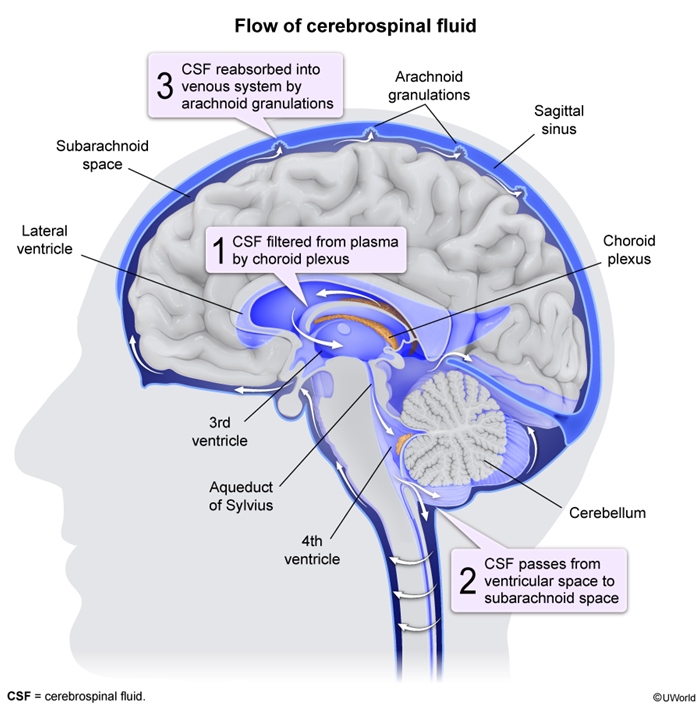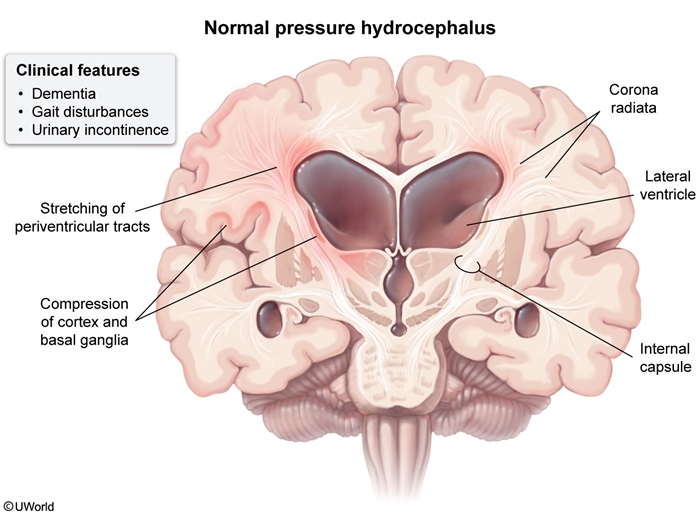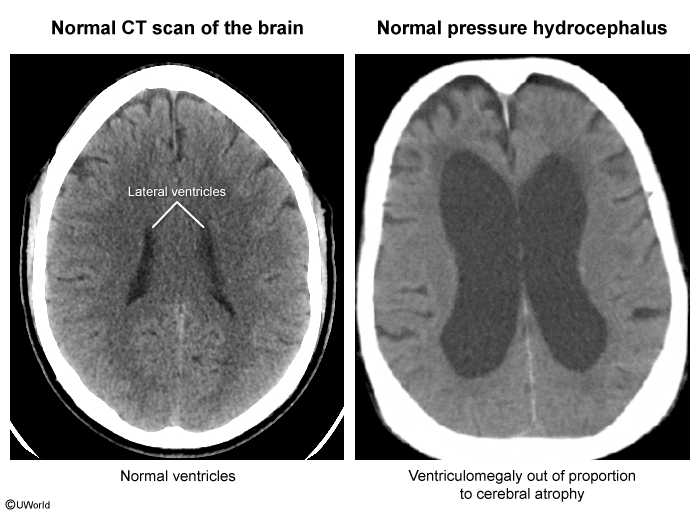Normal Pressure Hydrocephalus (NPH)
Article Sections
Introduction
Normal pressure hydrocephalus (NPH) describes ventriculomegaly that develops despite normal cerebrospinal fluid (CSF) pressure. Gradual ventricular expansion produces the classic symptom triad of:
- Gait dysfunction.
- Urinary incontinence.
- Cognitive impairment.
Accurate diagnosis is important because symptoms are potentially reversible with CSF drainage (eg, with a ventriculoperitoneal shunt).
CSF physiology: normal and hydrocephalus
CSF (Figure 1) is continually produced by the choroid plexus via filtration from plasma and then passes through the ventricles before exiting into the subarachnoid space (eg, basal cisterns, cerebral convexities). CSF then flows to the arachnoid granulations, where it is reabsorbed (down a pressure gradient) into the venous sinuses, which empty into the jugular veins (ie, CSF reenters the systemic circulation). Under normal conditions, the arachnoid granulations can adjust the rate of CSF reabsorption to match that of CSF production.
Continue Learning with UWorld
Get the full Normal Pressure Hydrocephalus (NPH) article plus rich visuals, real-world cases, and in-depth insights from medical experts, all available through the UWorld Medical Library.
Figures


Images
